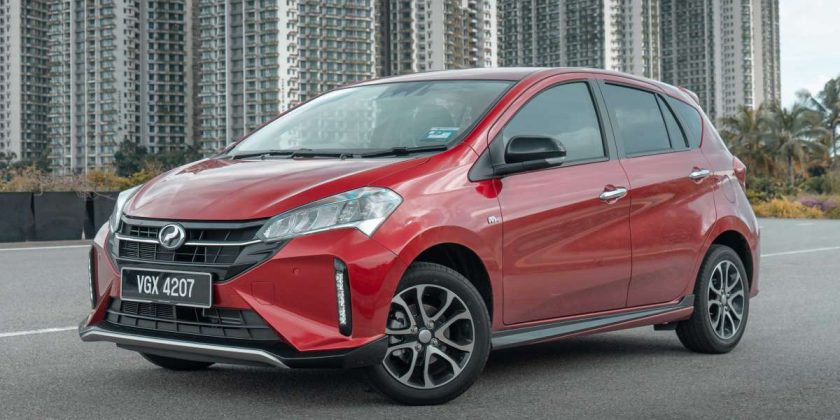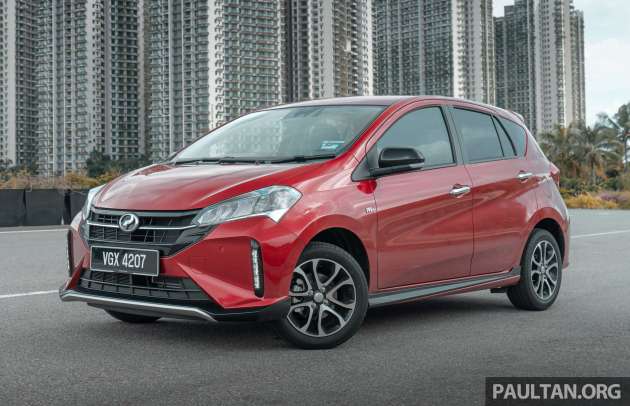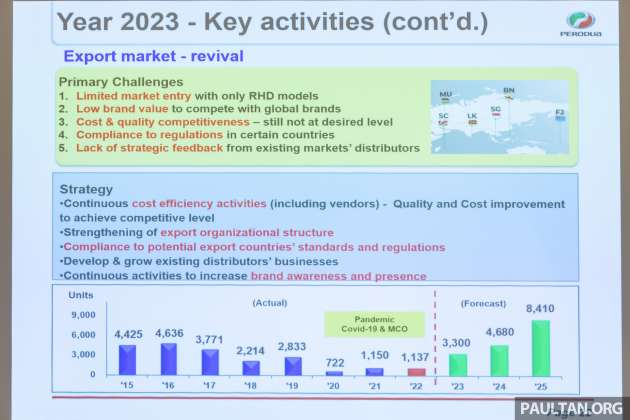Increasing domestic sales isn’t the only goal for Perodua, as the local carmaker also revealed today that it plans to revive its export business significantly over the coming years. After a slump in exports from 2020 to 2022 due to the Covid-19 pandemic and movement control orders (MCOs), the company says it is forecasting exports to hit 3,300 units in 2023.
This will be followed by an increase to 4,680 units in 2024, and to 8,410 units in 2025 with the latter amount representing an increase of 640% from the 2022 total of 1,137 units. For further context, Perodua exported 1,150 units in 2021 and 722 units in 2020, while it was between 2,214 and 4,636 units from 2015 to 2019.
Referring to the company’s official website, Perodua currently has a sales presence in the following overseas markets: Brunei, Singapore, Mauritius, Fiji, Sri Lanka and Seychelles – models offered are the Aruz, Axia, Bezza and Myvi. The brand also exists in the United Kingdom, although Perodua UK only deals in service and spare parts.
In one of the company’s slides, Perodua identified a few primary challenges it is currently facing in relation to exports. These include limited market entry due to the fact it only makes right-hand drive cars, low brand value relative to global brands, cost and quality competitiveness that are currently not at the desired level, compliance regulations put in place in certain countries, and a lack of strategic feedback from existing markets’ distributors.
To meet its targets, the company said it will conduct continuous cost efficiency activities alongside vendors to improve quality and cost to competitive levels. Its export organisational structure will also be strengthened, while existing distributors’ businesses will be developed to promote growth. Perodua will also look to increase brand awareness and presence, and products will be developed to comply with potential export countries’ standards and regulations.
Research Perodua Cars at
Source: Read Full Article








